Chiropractic Treatment for Horses
Equine Chiropractic
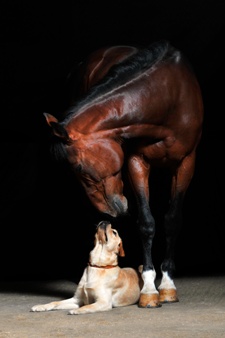 Animal Chiropractic care is a manual therapy which can be used for many health and performance problems. Chiropractic focuses on the abnormal
movements of the spine and the effects these restrictions have on the nervous system and the entire body.
Animal Chiropractic care is a manual therapy which can be used for many health and performance problems. Chiropractic focuses on the abnormal
movements of the spine and the effects these restrictions have on the nervous system and the entire body.
The goal of chiropractic treatment is to maximise mobility and optimise nervous system function to allow unrestricted exchange of information between the brain and all the body's organs.
Restricted mobility between two vertebrae (a vertebral subluxation complex or 'VSC') can adversely affect and/or irritate the nerves that exit the spine.
Prior to chiropractic treatment a full medical history of the animal is taken and the entire spine and limbs are examined to identify restricted movement in individual joints. If a restriction in motion is detected, the affected joint will be adjusted.
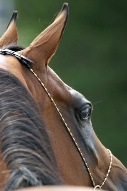 Chiropractic treatment does not replace traditional veterinary medicine and all treatment is carried out with veterinary consent. It can, however, provide
additional means of diagnosis and treatment options for spinal problems, musculoskeletal disorders and internal organ dysfunction. Chiropractic is also an effective
treatment for acute or chronic pain syndromes.
Chiropractic treatment does not replace traditional veterinary medicine and all treatment is carried out with veterinary consent. It can, however, provide
additional means of diagnosis and treatment options for spinal problems, musculoskeletal disorders and internal organ dysfunction. Chiropractic is also an effective
treatment for acute or chronic pain syndromes.
Aftercare usually involves rest and limited exercise for a few days. The animal may require several treatments, depending on the nature of the condition. It is recommended that some animals receive regular check-ups to help maintain their optimum performance and health.
Working with Horses - Common causes and symptoms
Everyday most horses are exposed to situations which can cause potential damage to their spine. The following examples can cause misalignments or 'vertebral subluxation complexes' (VSC's) in horses and other animals:
- Trauma: caused by falls, trips, slips or being cast in the stable.
- Performance: Every event or activity strains the spine in different and specific ways.
- Narcotics: The entire general anaesthetic process can cause problems in the spine.
- Rider: Problems with the rider's seat i.e. crooked or forked seat can lead to back problems in both the horse and the rider.
- Transportation: Long journey times, accidents (however minor), poor shock absorption in the trailer etc can cause potential damage.
- Shoes: Poor hoof care and incorrect shoeing interfere with the horse's movement resulting in VSC's of the spine.
- Birthing difficulties: difficult births where the foal is forcibly extracted can cause problems to both mare and foal.
- Saddle: Poorly fitting saddles are one of the most frequent causes of back problems in the horse.
- Lack of movement: lack of space in which to move does not give the horse enough opportunity to ease tension by bucking or rolling.
- Age: As age increases the effects of previous small and /or large traumas to the spine become more apparent.
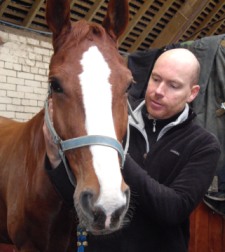
Horses with VSC's may present with many symptoms, the most common of which is pain. Horses with pain in their back often express this in their posture or in their refusal to work. The horse attempts to compensate for the pain by changing its posture and gait, but this can result in other problems such as joint changes.
The following symptoms may indicate pain caused by a VSC:-
- Reduced performance
- Abnormal posture
- Snapping and pinning back of the ears when being saddled or rugged
- Insubordination when being ridden
- The attempt to free itself by throwing its head back or up or by hollowing of the back
- Swishing of the tail and pinning of the ears
- Disobedience when jumping
- Changes in behaviour
- Difficulties with collected or lateral gaits
- Frightened or painful facial expression
- Sensitivity to touch
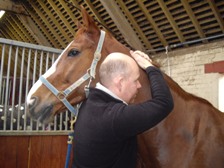
Misalignments of the spine can affect muscle co-ordination and mobility of the horse, thereby causing decreased performance such as:-
- Abnormal gait rhythm
- Irregularity of gait which cannot be assigned to a particular leg or gait
- Stiffness when the horse leaves the stable
- Stiffness when bending and in its general posture
- Muscular atrophy
- Brushing or interfering
- Difficulty engaging the hind quarters
- Difficulty working long and low
- Shortened stride in one or more legs
- Overall decreased range of motion in gait
- Difficulty flexing at the poll
- Lameness
- Horse pulls against one rein
- Rider is seated off centre due to the horse
- Horses back does not swing
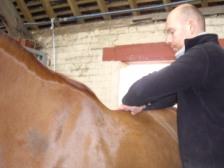
A major effect of a VSC can be impairment to the flow of information in the nerves which exit the spinal cord between the vertebrae. As these nerves innervate the skin, certain glands and blood vessels, such neurological disturbances can result in the following symptoms:
- Unusual itching at the base of the tail or other body parts
- Increased sensitivity to heat or cold
- Asymmetrical or reduced sweating and perspiration
Equestrian Disciplines
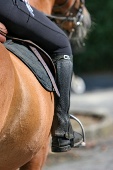 Different equestrian disciplines can cause specific VSC patterns:
Different equestrian disciplines can cause specific VSC patterns:
Dressage horses with VSC's in the lumbar spine have difficulty bending correctly and executing lateral movements. Further consequences include poor engagement of hind limbs and a lack of suppleness.
Show jumpers with VSC's in the lower thoracic and lumbar vertebrae have difficulty rounding their backs. They often land in cross canter and have problems changing the lead in canter.
Endurance horses with VSC's in the thoracic and cervical spine often demonstrate soreness in the back and an unlevelled gait rhythm. Further effects are a noticeable drop in performance as well as a stiff neck.
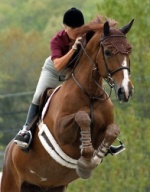
Driving horses with VSC's in the thoracic and lumbar vertebrae tend to drop one shoulder, move on two tracks and often pull or show gait abnormalities.
Western horses with a restriction in the lumbar vertebrae and the sacroiliac joints have difficulty in bending laterally and show single sided problems in turns and spins, as well as undefined lameness in their forelimbs.
N.B. Veterinary permission must be obtained before the treatment of animals. A simple telephone call to your vet requesting permission is usually all that is required.
For an appointment call
01303 863460
or
07905 031850

-

-
Feel great with Juice PLUS+® Complete
-

-
Essential nutrients of 26 sun-ripened fruits, vegetables and berries. Click to learn more

